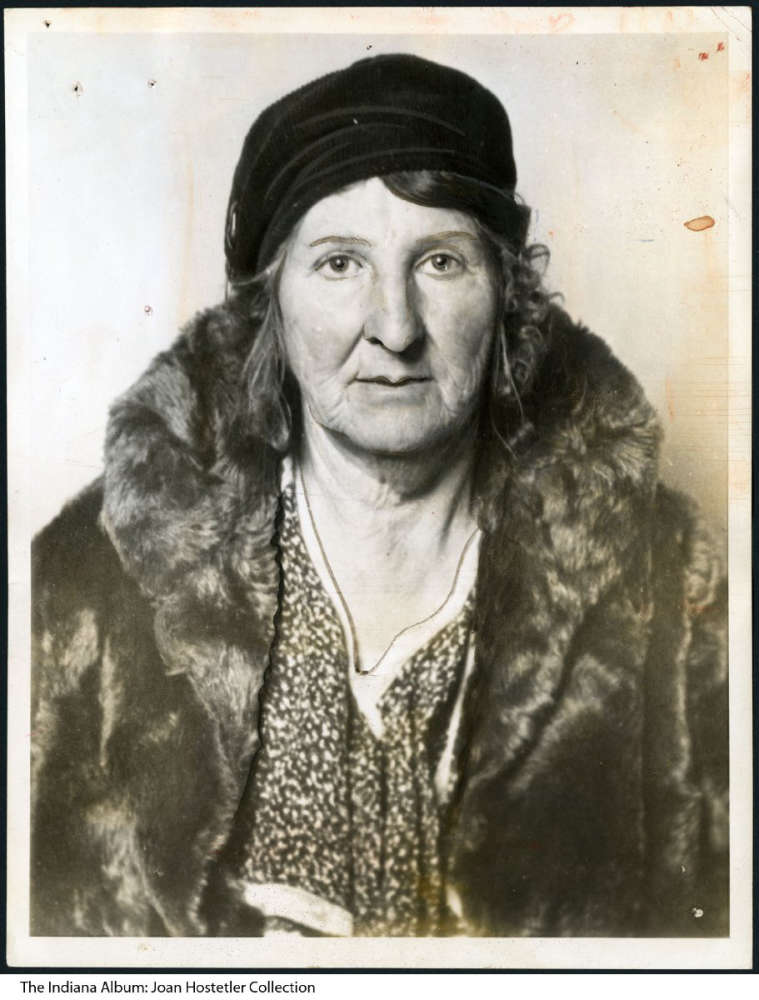
Irene Ray was an outcast from the start when her family of three had moved to Rochester in 1932 after applying for relief and welfare support. After Irene began being blamed for misfortunes around town, mounting allegations relating to witchcraft would outcast her even further and lead to townsfolk demanding the woman's removal.
It’s been more than eight decades that Rochester made national headlines after an outcast was thrown out of town due to allegations of witchcraft. Featured in newspapers, magazines and books across the country, the alleged modern-day witch cast out of a small Indiana town put Irene Ray in the limelight of negative publicity, showcasing her as a witch to some and a victim of scapegoating to others.
Irene’s family had not had a favorable start in the Rochester community when they moved to the area in 1932. The Rays had been struggling financially and after applying for relief and welfare support, Irene, her husband Charles, their daughter IIoe and cat Fuzzy were placed in a shabby home on Audubon Avenue.
Times had been hard for most families in Fulton County at that time, when the Great Depression had its grip on the nation. Neighbors quickly found resentment in the outsiders collecting welfare from their county. The family was said to have been made well-aware that they were not welcome in Rochester. Over a span of six years living in the community, the Ray family would experience multiple altercations with townspeople. They soon began blaming Irene for misfortunes happening within the community.
It was rumored that Irene had dabbled with voodoo dolls and spells to hurt her enemies. One neighboring farmer was said to have blamed Irene for cursing his potato field after he had told her to stop using his property as a shortcut to the grocery store. Irene would also be accused of causing townsfolk to suffer from things like insomnia, nervous indigestion, floods and fires. Stories spread that for deaths Irene occasionally consulted with a more powerful witch in Plymouth.
When 25-year-old Georgia Knight Conrad was stricken with a sudden illness, many community members pointed the blame toward Irene. The Knight family claimed Irene had caused their daughter to suffer from leakage of the heart after she had allegedly stolen some of Georgia’s hair from a hairbrush and making a spell jar that was eventually buried.
The sudden death of Rochester’s Chief of Police Clay Sheets from what appeared to be a heart attack sparked hysteria in the small town against the Ray family. Irene was reported to have previously exploded on Chief Ray in anger when he had overseen the removal of their 6-year-old granddaughter from charges of "morals of the household," promising the chief that he would pay for messing with her. Fear quickly gripped the community as locals started demanding that Irene be held accountable.
Concerns about Irene were eventually brought to State Attorney Murray McCarty, but were soon dismissed due to witchcraft not being illegal nor a chargeable offense in 1938 Indiana. The townsfolk were left unsettled and enraged, pursuing their fight against Irene regardless. Community members began pressuring local police about arresting Irene, threatening bodily harm to the woman if she wasn’t put in jail.
Irene would be accused of a total of eight hexes around Rochester by the time she was arrested May 11, 1938 over vagrancy charges. Irene denied all witchcraft accusations, telling a Columbus, Indiana, The Republic newspaper reporter, “If my accusers got right with God they won’t need to put such things on me, as I am living for the Lord and I intend to until I die. I won’t do the work of the devil because witchcraft is the handiwork of Satan. I feel sorry for my accusers because they cannot think any other way.”
It was also noted in reports on Irene that she had been a heavily black-haired woman, and was rumored to have been Native American. When asked, Irene would later state she was unsure of having any Native American descent.
Irene only served one day in jail before being released, but the new Rochester police chief made her promise that she would leave town as a compromise for her release. Irene and her husband soon moved to a house outside of town located north of Lake Manitou.
Irene was killed six months after being cast out of Rochester, when she and her husband were hit by a car on Nov. 4, 1938, while walking on what is now State Road 14. Logansport’s Pharos-Tribune reported on Irene’s death, stating that the car had been driven by May Kern, a bookkeeper for a local elevator from Athens. The woman stated she had been driving home from work when she hit the couple while trying to avoid a child on a bicycle and that a heavy rainstorm at the time had also hindered her view.
While her husband Charles was critically injured with a skull fracture, Irene died at the scene. Dying an outcast, Irene was buried in Bremen.
Soon after the Rays left Rochester, the Knight family claimed Georgia’s condition immediately began to improve. Two years later, however, Georgia died from her condition. Other than newspaper articles, little history remains locally about the outsider who was rejected from our town so long ago. Outside of Fulton County, the unusual story caught national attention from coast to coast, with newspapers and books around the country writing about the "modern-day" banished witch from Rochester, Indiana, as the allegations continue to outlive her 86 years later.


 Two Indiana State Fair Commission executives elected to prominent national IAFE Positions, Indiana State Fair honored with multiple awards
Two Indiana State Fair Commission executives elected to prominent national IAFE Positions, Indiana State Fair honored with multiple awards
 Carlos Plascencia named Fulton County Community Foundation 2026 Lilly Endowment Community Scholarship recipient
Carlos Plascencia named Fulton County Community Foundation 2026 Lilly Endowment Community Scholarship recipient
 Citizens Police Academy to be hosted by Starke County Sheriff's Office
Citizens Police Academy to be hosted by Starke County Sheriff's Office
 Indiana FSSA extends open enrollment for HIP and PathWays Plans through December 24
Indiana FSSA extends open enrollment for HIP and PathWays Plans through December 24
 Consumer Alert: Dozens of dangerous products recalled in November
Consumer Alert: Dozens of dangerous products recalled in November
 Kewanna to host 'first ever' Christmas tree lighting event Sunday
Kewanna to host 'first ever' Christmas tree lighting event Sunday
 Community Crossings awards announced, future grants to decrease
Community Crossings awards announced, future grants to decrease
 RTC Fiber Communications awarded Lifetime Philanthropy Award by NICF
RTC Fiber Communications awarded Lifetime Philanthropy Award by NICF




